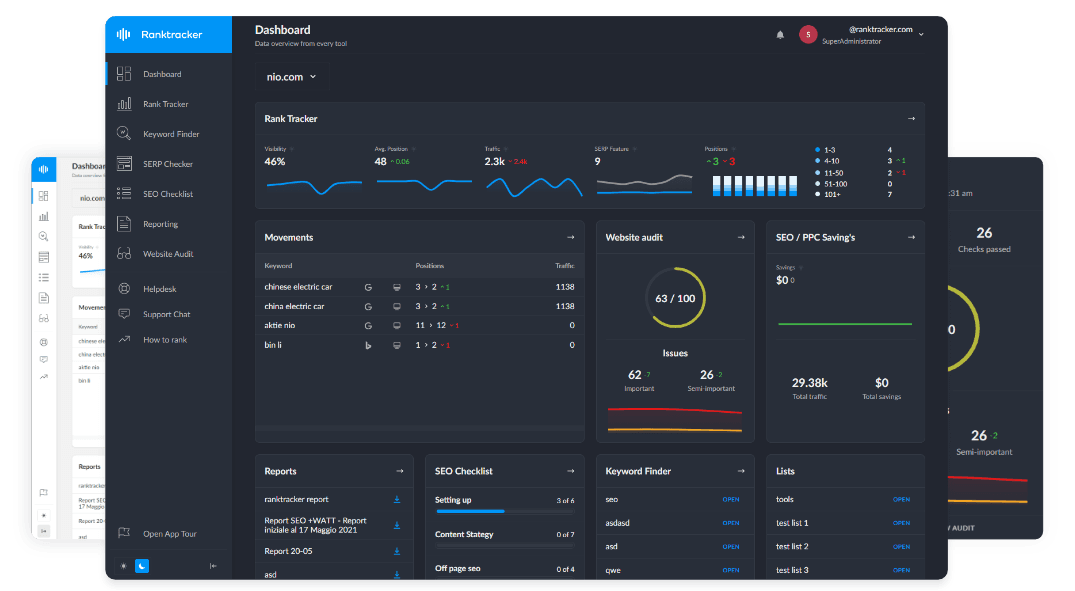Intro
In an era where search engine algorithms and customer expectations change rapidly, marketing agencies must utilize SEO tactics prioritizing speed, user-centricity, and measurable business impact. A strategy for growth depends less on static tactics and more on creating an environment of continuous change and functional collaboration. For agencies aiming to position themselves as industry leaders, the following article provides a comprehensive roadmap to building an SEO strategy that scales with client goals and market dynamics.
1. Philosophy of Growth-Driven SEO
A growth-driven marketing agency is based on the philosophy that search engine optimization is an ongoing, iterative process rather than a campaign-driven activity. This philosophy necessitates agility. This is where teams can reconfigure strategies based on real-time feedback, algorithmic changes, or emerging market trends.
For example, a client from the renewable energy sector may initially target “installation of solar panels” but later shift focus to “solar battery storage solutions, as consumer demand evolves. Incorporating flexibility in every campaign ensures its alignment with changing user demands and customers’ business objectives. Eventually, this cyclical thinking inspires endless innovation and positions agencies to be better than their counterparts in an ever-evolving digital landscape.
To institutionalize adaptability, the agencies need to implement a quarterly review of SEO strategies that reassess keyword priorities, content gaps, and technical benchmarks. These reviews prevent complacency and uncover underlying opportunities, such as capitalization on seasonal themes like “holiday e-commerce SEO” months in advance.
For instance, an agency serving the travel industry could use predictive analysis to plan content on “sustainable travel destinations” months ahead of peak travel seasons, establishing clients as opinion leaders before others can react. This systematic and proactive review process ensures that campaigns are agile and can capitalize on future trends for long-term competitive advantage.
2. Technical Excellence and User-Centric Design
Technical SEO is the foundation for all growth-driven projects in a marketing agency. Audits will often reveal issues like JavaScript rendering problems in single-page applications (SPAs) that can prevent search engines from crawling content until server-side rendering is implemented.
Aside from troubleshooting, proactive optimization, such as schema markup for rich snippets or lazy loading images to improve Core Web Vitals, directly improves visibility and user experience. For example, a marketing agency that prioritizes mobile-first indexing might redesign navigation menus for thumb-friendly scrolling, reducing bounce rates on mobile devices.
Equally critical is synchronizing technical effort with user-centered design. A heatmap analysis may uncover friction points, such as poorly placed CTAs or intrusive pop-ups, that are the death of engagement. An agency working for an e-commerce client can optimize checkout flows by reducing form fields, leading to a drop in cart abandonment rates.
The All-in-One Platform for Effective SEO
Behind every successful business is a strong SEO campaign. But with countless optimization tools and techniques out there to choose from, it can be hard to know where to start. Well, fear no more, cause I've got just the thing to help. Presenting the Ranktracker all-in-one platform for effective SEO
We have finally opened registration to Ranktracker absolutely free!
Create a free accountOr Sign in using your credentials
Adding progressive web app capabilities such as offline browsing or push notifications boosts mobile engagement and meets Google's UX-driven ranking criteria. Integrating technical expertise with deep knowledge of user behavior transforms the online experience into one that captivates, converts, and retains customers over time.
3. Customer Journey-Aligned Content Strategy
A marketing agency adopting a growth-driven content strategy begins by mapping content to the customer journey phases of awareness, consideration, and decision. At the awareness phase, informative blog posts such as "how to reduce energy bills" engage users early in their research. During consideration, comparison guides like "heat pumps vs. traditional HVAC" assist audiences in evaluating alternatives.
Transactional content, such as service pages for "best solar installers near me", is ideal for the decision stage and drives conversions. This phased strategy ensures content resonates with intent at every touchpoint. With every piece of content aligned to the specific steps in the customer journey, agencies can build lasting trust that transforms initial interest into long-term customer relationships.
To drive maximum influence, agencies build interconnected content ecosystems. A pillar piece like "Ultimate Guide to Home Energy Efficiency" would connect cluster content around insulation, smart thermostats, and tax rebates, creating a network of relevance that search engines will reward.
Repurposing high-performing blogs into video tutorials or downloadable checklists maximizes reach across varying learning styles. For example, a marketing agency could take a blog on "SEO for small businesses" and convert it to a podcast series, engaging audio-centric audiences, ensuring sustained keyword authority. This holistic approach maximizes platform visibility and creates a unified narrative that enhances the brand’s leadership standing in its industry.
**4. Data-Driven Agility and Predictive Adaptation **
Growth-driven SEO differentiates itself from traditional practices through relentless data integration. While historical analysis reveals previous performance, technologies like predictive machine learning allow marketing agencies to predict trends before they peak. For instance, a sudden uptick in niche forum discussion about “biodegradable packaging” can signal an emerging trend, allowing brands to dominate search results before competitors can mobilize.
Dynamic keyword optimization refines targeting, shifting focus to long-tail keywords like “compostable food wrappers” if competition for more generic terms becomes too intense. Continuous learning is also necessary. A marketing agency must remain cognizant of algorithm updates, such as Google’s emphasis on E-E-AT (experience, expertise, authoritativeness, trustworthiness), and adjust accordingly.
Experimenting with AI tools, such as content optimizers that analyze high-performance pages for semantic patterns, keeps content one step ahead of the competition. Adapting to voice search, for example, might involve writing FAQs in question-and-answer format. On the other hand, preparing for Google’s Search Generative Experience(SGE) can require concise, data-backed answers to complex queries.
5. Cross-Channel Strategies to Drive SEO through Integration
An agency gets the most out of SEO by integrating it with paid media, social campaigns, and PR strategies. Pay-per-click ads on high-intent terms like “CRM software pricing” drive traffic to SEO-optimized landing pages, conveying relevance to search engines through enhanced engagement.
The All-in-One Platform for Effective SEO
Behind every successful business is a strong SEO campaign. But with countless optimization tools and techniques out there to choose from, it can be hard to know where to start. Well, fear no more, cause I've got just the thing to help. Presenting the Ranktracker all-in-one platform for effective SEO
We have finally opened registration to Ranktracker absolutely free!
Create a free accountOr Sign in using your credentials
Similarly, promoting a blog on ”AI marketing trends” through LinkedIn or niche newsletters draws backlinks from niche communities, boosting domain authority. This integrated approach increases overall reach and delivers actionable insights that continuously optimize and refine SEO tactics.
Public relations also supports SEO initiatives. An agency might collaborate with a journalist to receive tier-1 publication mentions, establishing high-authority backlinks. For instance, a cybersecurity firm featured in a high-authority website on “ransomware prevention” can receive a contextual link to its pillar page, enhancing rankings for associated keywords.
By aligning SEO context calendars with product launches or seasonal promotions, agencies ensure integrated messaging across channels, turning isolated tactics into a unified growth engine. Collectively, these cross-channel initiatives create a cycle whereby increased brand credibility and media coverage directly drive sustainable organic growth and improved search performance.
6. Local SEO for Hyper-Targeted Markets
Local SEO is a necessity for agencies promoting businesses targeting local audiences. Google Business Profile optimization with geo-tagged photos, service-area descriptions, and Q&A improves visibility in local pack results. Requesting customer reviews and promptly replying to them creates social proof, boosting click-through rates and enhancing brand reputation.
Location-based content like “best coffee shops in [city]” or “hurricane-proof roofing recommendations for coastal houses” targets hyper-targeted demand and earns authoritative backlinks from government websites and local news sources. By integrating these strategies, agencies can radically boost local visibility and attract more targeted traffic, driving actual, measurable business growth.
Consistency is the most essential factor. An agency must ensure that the client’s NAP (name, address, and phone number) remains consistent across directories like Yelp, industry-specific websites, and social profiles. Coordination with local influencers, like micro-influencers in the home renovation business, can boost visibility and improve the client’s regional presence.
For example, a landscaping company might fund a community garden project, creating media coverage and localized links that solidify regional authority. Maintaining consistency and establishing strategic community partnerships ultimately reinforces local credibility and lays the foundation for sustained regional market dominance.
7. Ethical Practices for Sustainable Growth
An agency that focuses on sustainable growth rejects black-hat tactics in favor of white-hat, long-term strategies. Building backlinks through original research, like publishing a “post-pandemic consumer spending habits” survey, earns organic citations from universities or industry associations.
Regular backlinks audits, using tools such as Ahrefs or SEMrush, identify toxic links to disavow and maintain domain health. Transparency with clients about realistic timelines, such as 6-12 months for competitive keyword positions, helps to build trust and align expectations.
It is also crucial to educate clients on the risks of “quick fixes”. Agencies can demonstrate how keyword stuffing or private blog networks (PBNs) can lead to penalties and reverse years of effort overnight. Instead, highlight co-authoring leadership on thought topics with industry experts or producing webinars that earn quality links organically.
The All-in-One Platform for Effective SEO
Behind every successful business is a strong SEO campaign. But with countless optimization tools and techniques out there to choose from, it can be hard to know where to start. Well, fear no more, cause I've got just the thing to help. Presenting the Ranktracker all-in-one platform for effective SEO
We have finally opened registration to Ranktracker absolutely free!
Create a free accountOr Sign in using your credentials
For example, a financial planning agency promoting certified planners with a “retirement planning masterclass” can earn .gov or .edu backlinks, establishing authority. By consistently upholding these ethical standards, agencies secure a resilient online presence that supports sustained growth while earning long-term client loyalty.
8. Quantifying Influence Outside Rankings
A growth-focused marketing agency monitors metrics directly tied to business outcomes instead of vanity rankings. Monitoring organic conversion rates, like form submissions or free trial sign-ups, reveals whether SEO is fuelling significant engagement. Sophisticated platforms like Google Analytics 4 offer multi-touch attribution, quantifying SEO’s contribution to cross-channel conversions.
For example, a B2B software client might find that 40% of demo requests are sourced from organic search, which makes it worth increasing investment in technical optimization. Benchmarking against industry-leading best practices puts things into perspective. If a client’s average session length is 20% lower than the competition, an agency can audit content readability or enhance multimedia integration.
Calculating ROI by comparing customer lifetime value(CLV) vs. SEO investment, like a 50,000 annual investment that brings in 500,000 in repeat business, demonstrates tangible value to stakeholders. Consistent reporting of these numbers makes SEO an accountable growth driver, not a cost center. Additionally, aligning these insights with overarching revenue targets empowers organizations to continuously refine their strategies, ensuring each investment directly fuels sustainable business growth.
Endnote
For growth-driven marketing agencies, SEO is more than a strategy; it’s a mindset that harmoniously integrates technical accuracy, flexible data methodologies, and moral principles. Through ongoing learning, collaborative cross-channel efforts, and user-centered campaign planning, agencies can become true partners in their client’s growth journey.
By doing so, they promote accountability, so that success is measured not just by rankings or traffic, but by the client’s overall business outcomes. The future belongs to those who adopt flexibility, prioritize value over the long term, and remain resolute in delivering measurable business outcomes.

